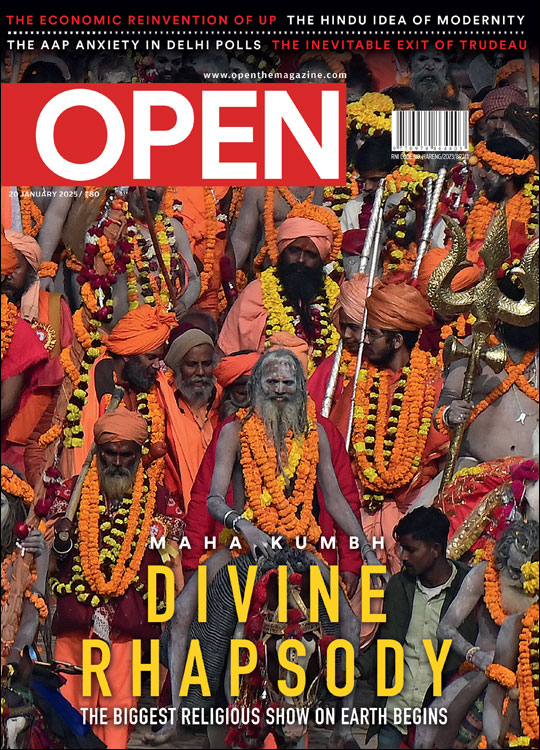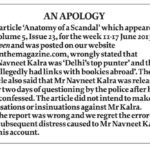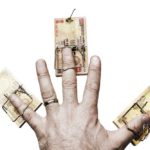The Vital Hour
How India tackles the economy at this critical juncture could make the difference between staying in the current slump and returning to high growth in 18 months
/wp-content/uploads/2015/11/recession_0.jpg)
An appropriate response to the economy right now could help India return to high growth in 18 months
CLOCKS CAN make you sweat. Even in the bitter cold. Ask mountaineers, especially those who like their challenges steep. On Mount Everest, it’s an hour’s climb from a point on the ascent called Hillary Step to the summit. It’s the toughest hour any climber would ever have done. For, at about 8,000 metres above sea level, an elevation at which the air is so thin you can almost hear your thoughts gasp, you enter death zone. The fatigue is overwhelming, but allowing it to set in would stretch the hour into an eternity you’re not yet ready for. It pays to be alert. Any false move, even a flicker of complacency, could land you in a crevice for icy preservation. Yet, and yet, with the summit in sight, there’s no question of yielding to such a fate.
It’s that vital hour for the Indian economy. The common citizen may be scarcely aware of it, but India’s $1 trillion economy—give or take a few score million—is at Hillary Step.
In other words, muddled policymaking will not do. The economy has already been through a phase of confusion, with monetary (the supply and price of money) and fiscal policy (the extent of government expenditure in excess of its revenues) both having had to take sharp turns after the Big Bust brought on by the US credit crisis, which ended a rip-roaring boom in late 2007.
What does it all mean?
Well, things will get worse before they get better. The Indian economy, buffetted by global winds from the West, is in a slump. By the numbers, India’s GDP growth is likely to slip this year, again, making it its second successive year of decline. After the heady 9 per cent annual average for four years running (from 2004-05 to 2007-08), this will hurt. All the more so for urban Indians who have gotten used to hefty salary increments, fat bonus packages and job options aplenty.
There’s no space for denial. Even Montek Singh Ahluwalia, deputy chairman of the Planning Commission, after maintaining for months that the Indian economy was reasonably unaffected by global headwinds, and that it would still manage a decent 7 per cent clip, has conceded that 2009-10 will be worse than 2008-09.
How much worse, nobody knows. Estimatesrange from an optimistic 7 per cent to a gloomy 4.5 per cent. The optimist here is the Prime Minister’s Economic Advisory Council, which forecasts 6.5-7 per cent growth for 2009-10. There’s also an over-optimist in Dr Pronab Sen, India’s chief statistician, who sees 8 per cent as plausible. The pessimist is the International Monetary Fund (IMF), which forecasts 4.5 per cent for India, which it thinks is good given that the world economy will contract in 2009. The super pessimist is the World Bank, which has put out a mere 4 per cent. The venerable Economist Intelligence Unit places India’s 2009 growth at 5 per cent. But the real realist might turn out to be the Confederation of Indian Industry (CII), which expects 6.1-6.5 per cent growth in 2009-10.
When will the good times return? Not anytime soon, says Anjan Roy, chief economist at the industry lobby Ficci. “A revival will take time,” he says, “There is a lag effect between monetary policy and its result on the bottomline. We will be in a tight squeeze till October 2009 at least. After that, should the monsoon be good, the economy could take a turn for the better. But only marginally so. A full-fledged recovery depends entirely on the state of the rest of the world.”
All considered, revival could take more than a year, and attaining the earlier growth trajectory could take 18 months or maybe more. And that, if things go well.
COUPLED CUP OF WOE
One of the early lessions from the ongoing crisis is that ‘decoupling’ is a myth. Despite claims made by former Finance Minister P Chidambaram and his team that India’s economy was free enough of global linkages to survive a worldwide downturn, it has turned out quite the contrary. Or these claims have proven to be exaggerated at the very least. The fact is that globalisation is upon us big time.
Take capital flows first. In the third quarter of 2008-09, the period just after Lehman’s collapse, India reported its first negative score on its capital account in a decade (since the first quarter of 1998-99 to be precise). By data provided by the Reserve Bank of India (RBI), India recorded $70 billion in inflows against $73.6 billion in outflows, most of it portfolio investments and other forms of ‘hot money’ fleeing Indian shores. Hot money flows are always volatile, but the October-December period last year was a nauseating shock that sent the rupee crashing.
Next, look at the trade scenario. A global slump in demand spells trouble for Indian exporters, many of whom have already had to reduce production severely. Most of India’s exports, whether high-tech software or low-tech clothes, are labour intensive products since warm bodies are cheap here. An export crash thus means massive job losses, as anyone in Surat, Tirupur and other export towns can tell you today.
The export sector’s ‘near death’ experience, though, was the third quarter of 2008-09, when global trade credit froze. For that period, India recorded a so-called current account deficit of $14.6 billion, the biggest gap since 1990 (recall that sorry episode?) . Imports exceeded exports by a big margin. Even for the entire year, Indian exports are likely to log only about $170 billion, some $30 billion short of the 2008-09 target and far below the year’s import estimate of about $288 billion.
For a trillion dollar economy, these are large numbers, and they make nonsense of claims that India is not dependent on the world economy. It certainly is. Let’s face it, India’s foreign trade equals about 46 per cent of GDP. That’s Intensity with a big ‘I’, given that the corresponding ratio for the US, that cheerleader of globalisation, is only 41 per cent. Holding illusions of insulation from the world is cavalier economics at best.
That’s why nobody can ignore credit crisis losses worldwide, which now threaten to touch a figure of $4 trillion. If that sum does not give you palpitations, consider this. Most of it is still to be assessed properly, written off bank books and so forth. While talk of ‘green shoots of recovery’ may be fashionable among stock brokers desperate for a bull market return, the global crisis is far from over yet. There’s depression in the air.
The IMF expects the world economy to shrink by 1.3 per cent in 2009, before a mild recovery of a positive 1 per cent or so in 2010. Retail sales in the US and UK may be up slightly, and stock markets may have cheered what they think is the end of worsening news, but this is no time for premature celebration. Economists warn that despite all the fiscal stimulus boosts being tried across the world, fixing the financial system could take several years. Regulators and investors are still trying to grasp the problem at its core.
DOMESTIC DERBY
For Struthionine businessmen and policymakers (look it up: it involves a long-necked bird with a fondness for sand), the saving grace has always been the gigantic size of the domestic market. The common refrain still in circulation is that India’s millions, those faceless people who crowd shopping malls, buy instant goodies by the cartload, and open their wallets every few seconds under the hypnotic influence of whizkid marketers, will keep the economy roaring ahead.
Now, this piece of reasoning may well turn out to be valid, and we’d rather not go testing it, but there’s a flipside as well. Household consumption accounts for nearly two-thirds of Indian GDP (China’s figure is 33 per cent, which is why trade sector tremors reach Beijing faster than New Delhi), which is good going. But consumer confidence is not all that de-coupled from the rest of the world either. A trip-up here could imply devastation. Research figures put this confidence at a low at the moment, which could depress urban consumption. For instance, during the April Akshaya Tritiya festival, when demand for gold is supposed to hit the roof, purchases this year actually dropped (to 45 tonnes from 50 tonnes last year), according to the World Gold Council.
What’s more, one of the biggest drivers of the economy, the housing sector, has more or less tanked. Now, homeowners don’t just buy a house, the buy into an entire economy. Ripples of demand are generated for the cement, steel and other industries. Then there are consumer durables (thinks fans, TVs and assorted household appliances) that are bought. All of this constitutes ‘derived demand’. The bust in the housing sector is made worse by the boom that preceded it. Earlier, rising incomes, booming confidence and easy access to loans resulted in homes being bought as if they were off-the-shelf products. DLF, India’s biggest real estate developer, rode the boom to a stockmarket listing, quickly becoming a darling of retail investors. But it didn’t last, as you can see in DLF’s financial results. Its sales for the last quarter of 2008-09 sank by nearly 70 per cent, while net profits tumbled 87 per cent. Its troubles are symptomatic of the entire real estate industry. Realty prices are down 25 per cent, but even this hasn’t revived demand.
“The escalations over the last three years were far in excess of the correction,” according to Ashwin Puri, CEO of Pioneer Property Zone, a Mumbai-based real estate consultancy, “Both rentals and ownership cost had doubled for three years in succession. Now, virtually no new project is taking off, and everybody is counting the cost of irrationality. The lessons of 2008-09 will haunt the real estate business for the next five to seven years.”
It has been left to the government’s stimulus package and infrastructure spending to spur demand for cement and steel, both of which are struggling to recover from the construction slump. It’s not a pointless struggle, according to Arun Ramnathan, the outgoing finance secretary. In his analysis, the domestic cement and steel sectors have shown signs of improvement. And going by the stockmarket response to signals coming from these sectors, there may be more than a whiff of recovery in the air. Broadly, of course, Dalal Street watchers expect the Bombay Stock Exchange (BSE) Sensex to turn bullish only if a new government is voted in with what can be considered a stable mandate.
Right now, the credit crunch is the operating reality that everyone has to grapple with. Home, automobile and other consumer loans are still hard to come by. Banks have turned overcautious, and have tightened their lending norms in fear of going through what their counterparts in the US have had to endure.
Thankfully, what has taken the place of easy money from banks, according to economic analysts, is a series of government measures to boost the economy. “The fiscal stimulus is important,” says Subir Gokarn, chief economist, Asia Pacific, Standard & Poor’s, a credit rating agency, “but the most interesting intervention was the Pay Commission reward. That put about Rs 80,000 crore in the hands of the government workforce who have secure jobs and will spend that money.”
That might explain recent automobile ads offering special deals to government employees. After a traumatic period with sales slumping last year, the automobile sector has now begun to stage something of a snap-back. India’s top carmaker Maruti has reported a bounce in volume sales for March 2009, and others haven’t done too badly either. “With banks slightly less shy to lend, the spurt in automobile sales could also be due to pent up demand of the last several months,” says Sumit Arora, head of Synnovate Motoresearch, “Also, a spate of new car launches is helping generate demand.” Credit, he adds, is still a big problem for the two-wheeler market, though.
But there’s more action to come. Gokarn, for one, also expects the government’s other fiscal stimulus measures to kick in. This, he adds, would hold “clues for the end of the recessionary cycle”. Remember, the Indian economy is a vast and varied entity. In all this, it is worth noting that rural markets have not been so badly hit. Marketers of motorcycles and cellphone services have thrived all through this gloom phase, going by the sparkling results of such companies as Bharti Airtel and Hero Honda.
Telephony is a phenomenon in a class by itself, but what explains Hero Honda’s showing? And what of the credit crunch in that market? “Tightened bank lending had thrown a spanner in the works,” says Anil Dua, senior vice-president, sales and marketing, Hero Honda, “The two-wheeler market was hit particularly badly because the creditworthiness of prospective two-wheeler buyers was deemed to be low.” But that was then. Two-wheeler sales have vroomed up since, mostly on the strength of rural demand, which remains buoyant.
Other consumer goods have similar stories to tell. “Urban penetration for durables has plateaued,” notes YV Verma, director, LG India, the country’s largest consumer durables firm, “Our rural marketing strategy is paying off handsomely. And remember rural India is doing rather well.” Ajay Shriram, chairman of DSCL, a group that has sizable business interests in farm inputs, fertilisers and rural retail, also has an observation to make. “The banking system is not very widespread in rural India, and lower bank lending has been a problem in other parts of India,” he says, “Therefore the hinterlands seem more stable. Although the rural economy has its own nuances, structurally it is very simple. That’s why it is on a better wicket.”
Indeed, other reports also suggest that Indian consumer demand has held firm in villages. Could the 2008-09 Union Budget’s farm loan waiver have played some role in this?
Whether it did or not, it certainly coincided with a dramatic shift in the incumbent UPA government’s fiscal policy stance.
INSCRUTABLE BALANCE
There’s no escape from monetary and fiscal policy. They’re both crucial to any economy. The RBI, in charge of monetary policy, has clearly had the tougher of the two jobs, given that globalisation has exposed the domestic economy, for most practical purposes, to the wide wild world and its wider wilder money. This exposure makes policy management devilishly tricky. Just think of the past few years. While the going was good, and dollars were gushing into India like there’s no sexier place to invest, the RBI defiantly tried to pull off a remarkable feat. Even with money moving easily in and out of the Indian economy, it sought to control both the international price of the rupee (exchange rate) and the domestic price of funds (interest rate). Both these, being prices, tend to respond to market demand and supply. But the RBI had its own sense of ‘balance’—an effort to insulate India from the world. This confused borrowers, who were never quite clear what their cost of funds was, or would be. This also confused importers and exporters, who were never sure how long an artificial ‘peg’ for the rupee could hold against the dollar.
The RBI has had it even tougher since the mid-September shudders of 2008. Once the great dollar influx turned into an outflux, it simply had to let the rupee tumble. Worse, it found itself somewhat ineffective in lowering the actual cost of available funds to spur business and help counter the recession that was starting to take its toll.
As for structural reforms of the Indian economy that could have given it the flexibility to respond better to the slowdown, the less said the better. The UPA government had virtually no nerve for any big move that would upset the few Marxists who still matter.
The action has been on the fiscal policy front. On this, the government has taken only one turn, but what a stunner it is. After striving hard to curb spending and crunch the fiscal deficit to a reassuring 2.5 per cent of GDP by 2007-08 (official figure), it suddenly loosened its spending: almost like a shooting spring that couldn’t stand the tension of staying so tightly coiled for so long. The year 2008-09 is likely to have seen the official deficit exceed 6 per cent, and with other offsheet items such as oil subsidies counted, even 8 per cent. While this is justified as a fiscal stimulus, and touted as something the legendary economist John Maynard Keynes would have approved of, it doesn’t display much confidence in private investment giving wing to the economy.
In financial markets, the focus now is on the government’s huge borrowing programme for the year 2009-10. In all, the Centre intends to borrow a sum of Rs 360,000 crore. Phew! This means either crowding out private borrowers or having the RBI print money, money and more money. Either way, this loosening spree sets up conditions for runaway inflation and rising interest rates ahead, after a lag, once demand picks up. Dr BK Joshi, director and chief economist, Crisil, another credit rating agency, is worried. “The borrowing will push the yields on government bonds upwards and thus make it tougher for the RBI to cut its policy rates,” he says, “This will in turn make it that much more difficult to allow for a near term cut in interest rates [by commercial lenders].” Is there a way out?
CRITICAL PATH METHOD
The new government would be taking over in the midst of India’s crisis hour. Its first task would be to sharpen an instrument to wield on the fiscal deficit. In effect, fiscal policy would have to take on the role of a pick-axe, the one vital tool to survive the final ascent in high-altitude mountaineering. Ask veterans. The pick-axe is the surest way out of a crevice.
Unlike the US, with its panicky $1.1 trillion fiscal stimulus, or China with its own $586 billion by way of state spending, India has only announced a package—last December—that amounts to a grand $4 billion. This is miserly by world standards, and is publicly explained by the ‘lack of headroom’ for greater largesse, but let’s not forget, it has also kept the pick-axe from turning blunt, and that’s a good thing.
What might the axe be used for? First on the slash list perhaps could be the massive oil and fertiliser subsidies, even if these are easier to manage now with global crude oil at $54 or thereabouts (down from the $147 per barrel peak on 11 July 2008). The potential savings in the oil sector are huge, and the accumulated ‘oil bond’ problem can also be resolved via some deft derivatives, though there may be other expenses that could be cut with less big-picture risk incurred.
Keynesian measures need not be dumped. After all, the wanton monetarism of the global go-go years has revealed how easy it is for policymakers to fall under the spell of tools of their own casting. The beauty is, the same goes for fiscal expansion. It is best used as a counter-cyclical tool (and no more) in bad times. If aggregate demand needs to be kickstarted, it needs to be kickstarted. For a sustainable bounce-back, we’d rather count on private initiative and associated ‘animal spirits’, in Keynes’ terminology. This means simplistic assumptions will have to be resisted.
So, while the stimulus is all very good, the real hope lies in reverting to the Indian four-year-boom model. The pacing of this switch-around, though, may need to be calibrated in accordance with an economic recovery worldwide. The outlook on this is not entirely bleak. According to Ficci’s Roy, even a sustainable recovery in China can act as a boost for the Indian economy. Thus, by October 2009, export demand could start looking up. Although the economic gloom is deeper and more persistent than once thought, most analysts concur that a clear picture of the future might emerge by then.
For now, India has some strategic ‘headroom’ in terms of a plurality of options. The country’s foreign exchange reserves, for example, may have fallen by $50 billion during the worst part of the crisis, but they still hover in the $250 billion region—enough to cover almost a year’s imports. Also, as a recent CII paper has noted, reserves have actually risen slightly since March 2009.
Much will now depend on how the pick-axe is used, exactly, and with what sense of timing. India’s crisis hour is not done yet. Be clear about that. But confidence lies in braving the ascent. Even if it makes us sweat like never before.

/wp-content/uploads/2025/01/Cover_Kumbh.jpg)












More Columns
What does the launch of a new political party with radical background mean for Punjab? Rahul Pandita
5 Proven Tips To Manage Pre-Diabetes Naturally Dr. Kriti Soni
Keeping Bangladesh at Bay Siddharth Singh